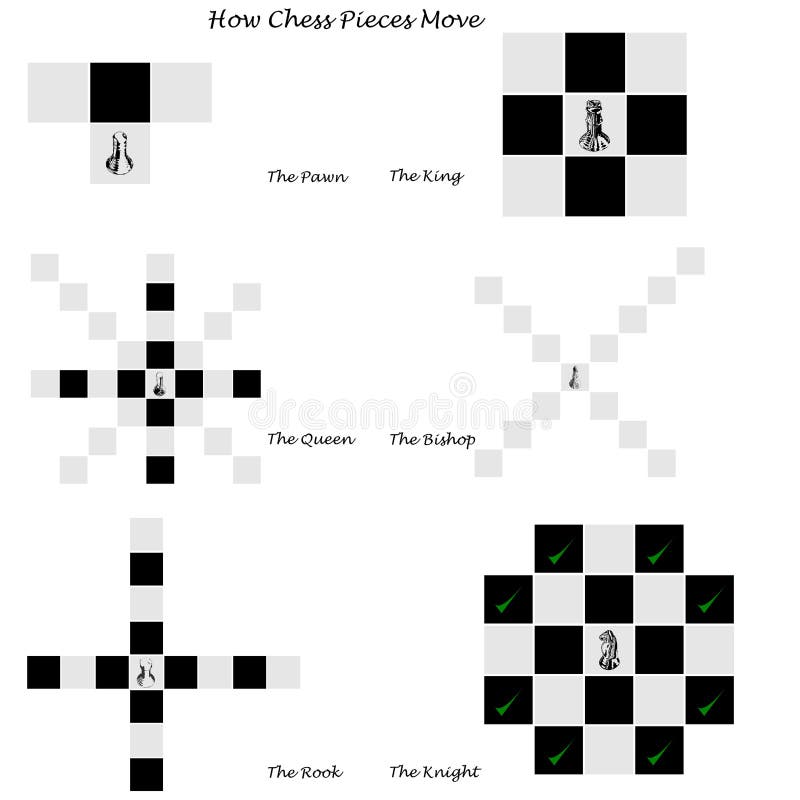


As a result, knights are best used in conjunction with other pieces, such as the pawn. On the flip side, the knight can also be easily blocked by enemy pieces and is vulnerable to attack from long-range pieces like bishops and queens. As such, it is a powerful piece that can quickly cover a lot of ground on the chessboard and reach strategic positions.

The knight is the only piece that can “jump” over other pieces. Players are given two knights, each worth 3 points. It can move in an L-shape in any direction, left, right, up, or down. Nonetheless, this can only occur if there are no pieces between the rook and king.Ī knight in chess moves in an L-shape, meaning two squares horizontally and then one square vertically, or vice versa. Castling is the only time when a player is able to move two pieces in one turn. The rook is also able to perform a move called “castling,” which allows it to move two spaces towards the king and then move the king to the square next to the rook on the far side. To capture an opponent’s piece, the rook directly moves into its space. The rook can move any number of empty squares up, down, left, or right, but it cannot move diagonally. Players are given two rooks placed on the left and right corners of the board. How does a Rook move?Ĭolloquially and incorrectly known as the castle, the rook is a chess piece valued at 5 points, second only to the queen (and king). To capture an opponent’s piece, the bishop moves diagonally into its space. The bishop is a valuable asset in defending one’s pieces as well as launching attacks, as it can quickly move across the board. One is placed between the king and king’s knight, while the other is placed between the queen and queen’s knight. If a bishop starts on a dark square, it can naturally only move to other dark squares diagonally.Įach player has two bishops, and they are valued at 3 points each. Bishops can not jump over pieces, and they can only move on their respective light or dark squares. The bishop is a long-range chess piece that can move diagonally in any direction across the board. Pawns are the only chess piece capable of doing this, giving them unique importance. If a pawn reaches the eighth rank (the other side), it can be promoted to any piece other than a king, including a queen, bishop, rook, or knight. Further, pawns cannot jump, move backward or capture enemy pieces by moving backward. When capturing enemy pieces, a pawn can move one space diagonally forward. On all other occasions, pawns can only move one space forward. Pawns can move two spaces forward on their first move if the spaces are empty. They are used to control the center of the board and to attack and defend your opponent. Each player starts with eight pawns, placed on the second row from each player’s perspective. However, players have more pawns (8) than any other piece. If you already solved this clue and are looking for other clues from the same puzzle then head over to Cod圜ross Cod圜ross' Spaceship Group 1196 Puzzle 5 Answers.Pawns are generally considered the weakest and most disposable chess pieces they are worth one point.

Novel by Sinclair Lewis and 1960 film Elmer _.Business efficiency research time and _ study.The _ Enemy Jimmy Cagney as a bootlegger.European country crossed by the Vistula River.A reflective surface used to look at ones face.Actress who married Ben Affleck in 2005.British father of computer science Alan _.Country where you could stay on the Côte dAzur.The medical diagnosis PAD peripheral _ disease.Filipino term for theft of a motor vehicle.Usually the tallest player on a basketball court.If you successfully solved the above puzzle and are looking for other related puzzles from the same level then select any of the following:


 0 kommentar(er)
0 kommentar(er)
